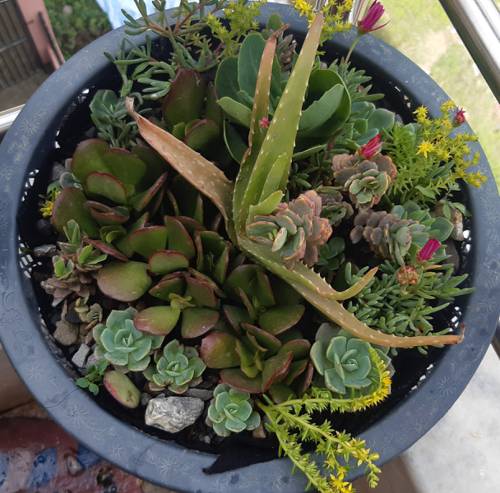
FAQ About Indoor Plant Growth Rate Influences

What are the main environmental factors influencing indoor plant growth?
Environmental factors that significantly influence indoor plant growth include light, temperature, humidity, and air quality. Adequate light is crucial, as it drives photosynthesis in plants. Indoor temperature should be conducive to the specific plant type requirements, typically ranging between 60-75°F for most houseplants. Humidity levels also impact growth; many indoor plants thrive in 40-60% humidity. Finally, good air circulation prevents mold and pests, fostering healthier growth.

How does light affect the growth rate of indoor plants?
Light is essential for plant photosynthesis, the process by which plants convert light energy into chemical energy. Indoor plants require sufficient light to grow effectively, and inadequate light can slow their growth rate. Different plants require varying amounts of light; for example, succulents and cacti need more light compared to ferns or ivy. Using grow lights can help replicates the sun's effect indoors if natural light is limited.

Can the choice of potting soil impact indoor plant growth rate?
Yes, the choice of potting soil can significantly impact the growth rate of indoor plants. Soil provides essential nutrients and supports root expansion. Well-draining soil is crucial to prevent waterlogging, which can cause root rot. Adding organic matter like compost can enrich the soil, promoting healthier growth. It's important to use soil that matches the plant species requirements, ensuring optimal aeration and nutrient availability.

Do indoor plants grow faster with regular fertilization?
Regular fertilization can boost indoor plant growth by supplying essential nutrients like nitrogen, phosphorous, and potassium. However, the frequency and type of fertilizer should be appropriate for the plant species and its growth stage. Over-fertilization can cause nutrient toxicity and damage, whereas under-fertilization might slow growth. A balanced approach, often with organic fertilizers, can encourage healthy growth patterns.

How does temperature affect indoor plant growth rate?
The growth rate of indoor plants is heavily influenced by temperature, as it affects metabolic and enzymatic activities within plants. Most indoor plants grow well within a temperature range of 60-75°F. Extremes in temperature can either slow down growth or damage the plant cells, leading to stunted growth or even death. It's important to maintain a stable temperature suitable for the specific plant species.

What is the role of humidity in indoor plant growth?
Humidity plays a crucial role in indoor plant growth by aiding processes like transpiration and nutrient uptake. Ideal humidity levels for most indoor plants range from 40% to 60%. Low humidity can cause leaves to dry and drop, while high humidity can encourage mold and pests. Using humidifiers or regular misting can help maintain appropriate humidity levels, benefiting plant growth.

Can indoor plant growth be influenced by air quality?
Air quality can have a notable impact on indoor plant growth. Poor air circulation may lead to a build-up of carbon dioxide and pollutants, hindering photosynthesis and health. Dust accumulation on leaves can block light absorption, further limiting growth. Ensuring good ventilation, possibly supplemented by air purifiers, can improve plant growth conditions by reducing airborne pollutants and facilitating gaseous exchange.

How does genetic potential affect indoor plant growth rates?
Genetic potential refers to the inherent growth capability of a plant species or variety, which influences how fast it can grow under optimal conditions. Some plants naturally grow faster (like pothos or spider plants), while others may be slow-growing (like fiddle leaf figs). Understanding genetic potential helps in selecting plants suited to your growth expectations and cultivation practices.

Do cultivation practices impact the growth rate of indoor plants?
Cultivation practices such as pruning, repotting, and watering directly affect the growth rate of indoor plants. Pruning helps manage growth direction and encourages denser foliage. Repotting allows roots to expand as plants grow, preventing root-bound issues. Proper watering, tailored to individual plant requirements, ensures adequate hydration, vital for nutrient uptake and growth.

Why is proper watering crucial for indoor plant growth?
Proper watering is essential for indoor plant vitality because water facilitates nutrient transport, photosynthesis, and cell structure stability. Overwatering can lead to root rot, while underwatering may cause dehydration and inhibited growth. Understanding the specific watering needs of each plant type ensures they receive optimal hydration to support healthy development.

What common mistakes affect the growth rate of indoor plants?
Common mistakes that can affect indoor plant growth include improper light exposure, overwatering, neglecting humidity needs, using unsuitable potting soil, and poor fertilization practices. Ignoring signs of stress or pest infestation can also impact health and growth. Addressing these factors and regularly assessing plant conditions can help improve growth rates.

How can I enhance the growth rate of my indoor plants naturally?
Enhancing the growth rate of indoor plants naturally can be achieved through methods like optimizing light exposure, maintaining suitable temperatures, ensuring regular watering and fertilization, and using organic compost. Improving air circulation and replicating natural habitat conditions as closely as possible also contribute to faster and healthier growth.

What is the impact of repotting on indoor plant growth?
Repotting can significantly influence indoor plant growth as it provides plants with more space for root development. When roots are confined, they can become root-bound, stifling growth. Repotting allows for better nutrient absorption and stronger plant structure. It's crucial to choose slightly larger pots and fresh, nutritious soil during repotting.

Can growth rate vary across different indoor plant species?
Yes, growth rates can significantly vary across different indoor plant species, primarily due to variations in genetic potential and environmental adaptability. Some species like spider plants or jade plants are fast growers, while others like bonsai or fiddle leaf figs grow at a slower pace. Knowing a plant's typical growth rate can help manage expectations and care practices.

What can slow down the growth rate of indoor plants?
Factors that can slow down the growth rate of indoor plants include inadequate light, extreme temperatures, poor air quality, insufficient nutrients, and unsuitable humidity levels. Psychological stress from pests or diseases can also inhibit growth. Regularly monitoring these factors and making necessary adjustments help maintain optimal growth conditions.

How does nutrient availability affect plant growth rate indoors?
Nutrient availability is crucial for indoor plant growth as nutrients serve as building blocks for development processes. Essential nutrients like nitrogen, potassium, and phosphorus play roles in leaf growth, root expansion, and flowering. Deficiencies can manifest in stunted growth, weak structure, and discolored foliage, highlighting the importance of balanced fertilization.

Do indoor plants need more care than outdoor plants for faster growth?
Indoor plants generally require more attentive care than outdoor plants to compensate for the lack of natural cycles like daylight variation and rainfall. Factors like light intensity, humidity, and air flow need to be managed manually indoors to mimic optimum growth conditions. Understanding each plant’s specific requirements can ensure they receive adequate care for faster growth.

How can pests affect indoor plant growth rates?
Pests such as aphids, spider mites, and fungus gnats can severely impact indoor plant growth rates by feeding on plant tissues, hindering nutrient uptake, and causing stress. Preventative measures include regular inspection, maintaining cleanliness, and using natural remedies or insecticidal soaps to manage infestations.

Is it possible to measure the growth rate of an indoor plant accurately?
Measuring the growth rate of indoor plants can be done accurately by monitoring changes in parameters like height, leaf size, or biomass increase over time. Regular measurements, such as weekly or monthly, can provide insights into growth trends under varying conditions. Keeping a growth journal may also help in tracking and optimizing care practices.

What role does pot size play in indoor plant growth rate?
Pot size is critical for indoor plant growth as it dictates the space available for root expansion. A pot that is too small can limit growth and make the plant root-bound, while a pot that is too large might lead to overwatering issues. Choosing the right pot size is essential to provide ample space for root growth without overwhelming the plant.
